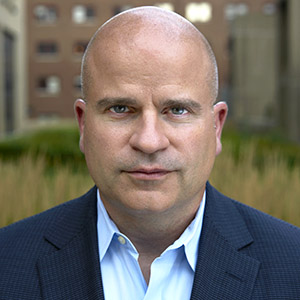In Minnesota, 97,000 people are projected to have Alzheimer’s disease in 2019.

November is Alzheimer’s Awareness Month and Joseph Gaugler, Professor and Robert L. Kane Endowed Chair in Long-Term Care and Aging, answers questions about what Alzheimer’s is, its symptoms, and risk factors. Gaugler’s research interests include the sources and effectiveness of long-term care for older adults with dementia and the effectiveness of community-based and psychosocial services for older adults with memory concerns and their caregiving families.
Q: What is Alzheimer’s disease?
Gaugler: Alzheimer’s is a type of dementia that causes problems with memory, thinking and behavior. It is the most common form of dementia, which is a general term used to describe impairments in mental function that compromise one’s ability to carry out day-to-day activities. Alzheimer’s disease is not a normal part of aging and worsens over time. There is no current cure for Alzheimer’s disease, but symptoms are treatable, to a degree.
Q: What are symptoms of Alzheimer’s and how is it diagnosed?
Gaugler: The earliest symptoms may include forgetting recent events or conversations. As Alzheimer’s progresses, memory and other important mental functions (e.g., communication, ability to pay attention, judgment, visual perceptions) become more impaired. In the later stages of the disease, persons with Alzheimer’s generally have significant difficulty performing basic activities to maintain independence.
Q: What are the risk factors for Alzheimer’s?
Gaugler: Risk factors for Alzheimer’s disease include:
- advancing age, as approximately one-third of people over the age of 85 are at risk of having Alzheimer’s disease;
- having a family history, especially those with a parent, sibling or child with Alzheimer’s disease;
- having various genetic dispositions such as the protein APOE4 which contributes to Alzheimer’s;
- being a woman, as women are more likely to get Alzheimer’s disease;
- having lower education;
- being African American or Latinx;
- having high blood pressure, high cholesterol, and poorly controlled diabetes.
There is no one test for Alzheimer’s. Instead, specialists use a number of approaches to help come to a conclusion of a diagnosis. These include obtaining a medical and family history, neuropsychological tests, blood tests and brain imaging.
Q: Are there any treatments for Alzheimer’s?
Gaugler: There are two types of medications that are approved to treat Alzheimer’s disease: acetylcholinesterase inhibitors, which increase certain chemicals in the brain called neurotransmitters, and memantine, which blocks certain receptors in the brain that may damage nerve cells. The benefits of these drugs vary from person to person and do so for a limited period of time. Non-pharmacological approaches to treat other complex symptoms of Alzheimer’s disease, such as behavioral challenges, have shown promise. Larger-scale, higher-quality research is needed.
Q: What are you doing to expand research on Alzheimer’s?
Gaugler: Our research has focused on evaluating innovative services and programs to support persons with dementia and their family caregivers. This includes several multi-year studies funded by the National Institute on Aging and Agency for Healthcare Research and Quality to determine the effectiveness of:
- remote activity monitoring for people with dementia and their family caregivers living at home;
- a tele-health support program for family caregivers of a relative with memory loss living in a residential care facility;
- a national evaluation of family care management and support programs integrated into adult day service settings;
- an educational program to enhance the dementia care capability of senior volunteers in Minnesota;
- an online care planning tool for family caregivers of persons with dementia that generates individualized support recommendations.
